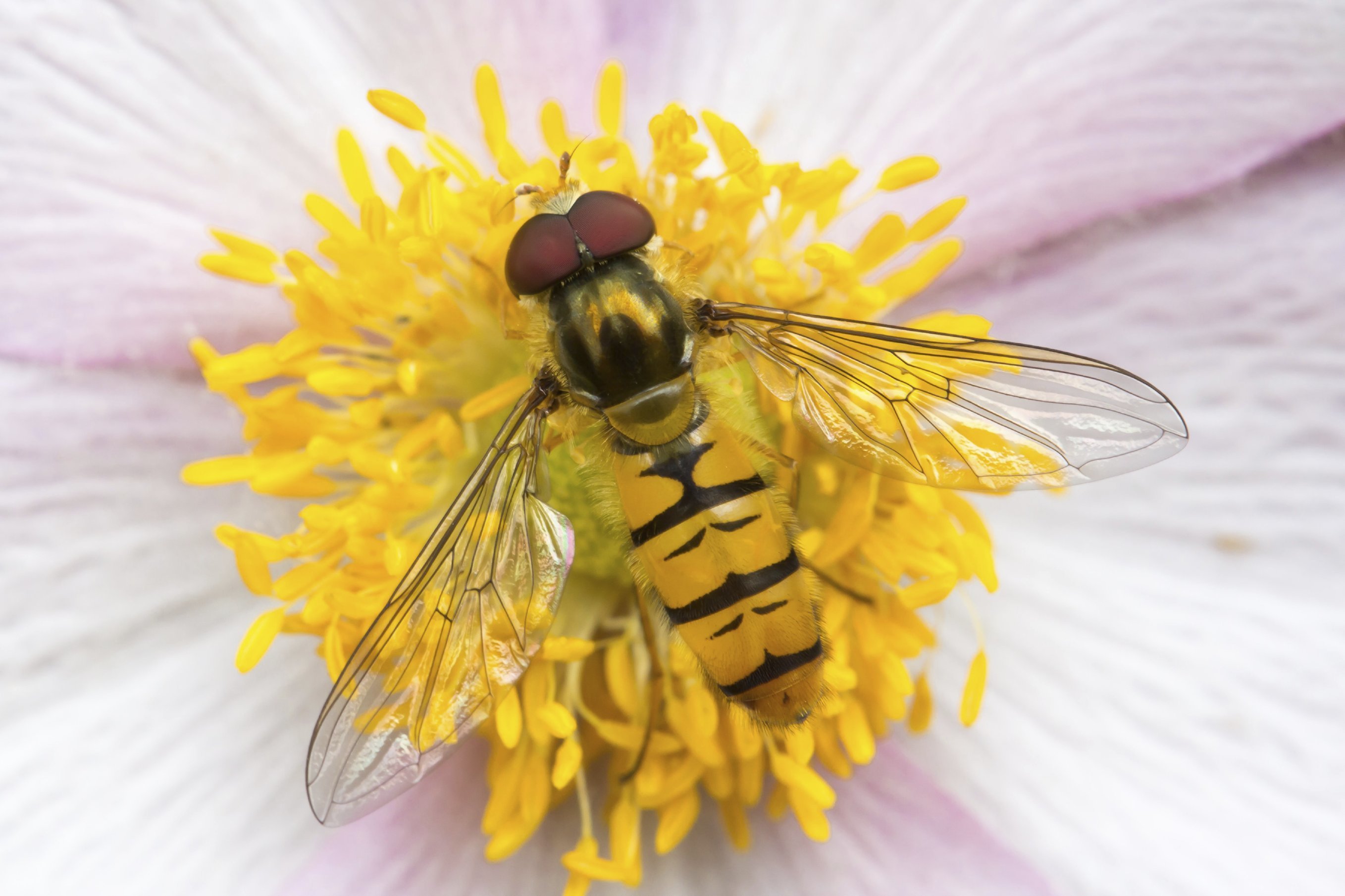Relaxing in the garden and enjoying the sun is a great way of getting close to nature, as I so discovered when lying on our lawn on a sun mat. Ahead of me the grass stretched like an expansive green sea but it was the abundance of tiny invertebrates that really caught the eye.
The daisies in particular were attracting a number of pollinating insects but the stars were undoubtedly the multitude of small dark hoverflies. Less than a centimetre long, these wee hoverflies were like mini-helicopters, moving forwards in a surge, before hovering for a second or two by a daisy, and then suddenly zipping off sideways to inspect another flower.
Their manner of flight was almost robotic and always in a straight line, with angular changes in direction rather than being executed in a smooth turn. Soon, I saw a different type of hoverfly advance towards me, but still in this strange and controlled linear flying pattern. This hoverfly was slightly larger than the other ones I had been watching and had paler markings on its abdomen.
There are more than 250 species of hoverfly in the British Isles and many types can be mighty tricky to identify because they are so similar to each other. Using a specialist insect reference book, I tried to identify the small dark hoverflies that abounded in our garden, but in the end could only narrow it down to several different possibilities.
As an amateur naturalist, I find this most frustrating because knowing what things are is a keystone of my being. But I suppose it doesn’t really matter in the end, for hoverflies are such a joy to watch and so very important to our environment. They are also little marvels of natural engineering being able to beat their wings several hundred times per second when hovering by flowers on the search for pollen and nectar.
Hoverflies are sun-loving insects and play an incredibly important role in pollination. The larvae of many species feast upon aphids, making them the gardener’s friend. Larvae of other types may eat plant matter, rotting wood and fungi, or are scavengers. Some are even aquatic.
One species that is relatively easy to identify is the marmalade hoverfly, which sports an orange body with thick and thin black bands across it. These hoverflies just love dandelions but will feed upon the nectar and pollen of a wide range of other plants too. Hoverflies are harmless, but many are patterned to mimic a stinging wasp or bee – a most useful ploy for deterring would be predators.
Another hoverfly worth seeking out is the Heineken fly, often found along hedgerows, in our gardens and by woodland edges. It has a distinctive long orangey-brown snout that enables it to probe deeply into long flower-heads.
And why called the Heineken fly? Well, for those who can remember the old beer adverts, it is because they can reach the nectar which other hoverflies can’t reach!
Info
Over 50 different species of hoverfly have been recorded in a single garden. The abundance of hoverflies is a useful natural indicator of the health of our environment.
